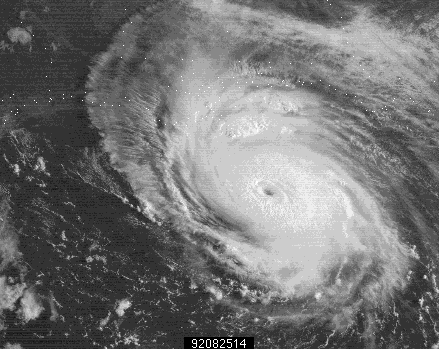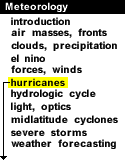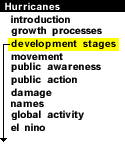
|

|
As surface pressures continue to drop, a tropical storm becomes a hurricane when sustained wind speeds reach 64 knots (74 mph). A pronounced rotation develops around the central core. |
Hurricanes are Earth's strongest tropical cyclones. A distinctive feature seen on many hurricanes and are unique to them is the dark spot found in the middle of the hurricane. This is called the eye. Surrounding the eye is the region of most intense winds and rainfall called the eye wall. Large bands of clouds and precipitation spiral from the eye wall and are thusly called spiral rain bands.

Hurricanes are easily spotted from the previous features as well as a pronounced rotation around the eye in satellite or radar animations. Hurricanes are also rated according to their wind speed on the Saffir-Simpson scale. This scale ranges from categories 1 to 5, with 5 being the most devastating. Under the right atmospheric conditions, hurricanes can sustain themselves for as long as a couple of weeks. Upon reaching cooler water or land, hurricanes rapidly lose intensity.

Development Stages |
|

eye |





